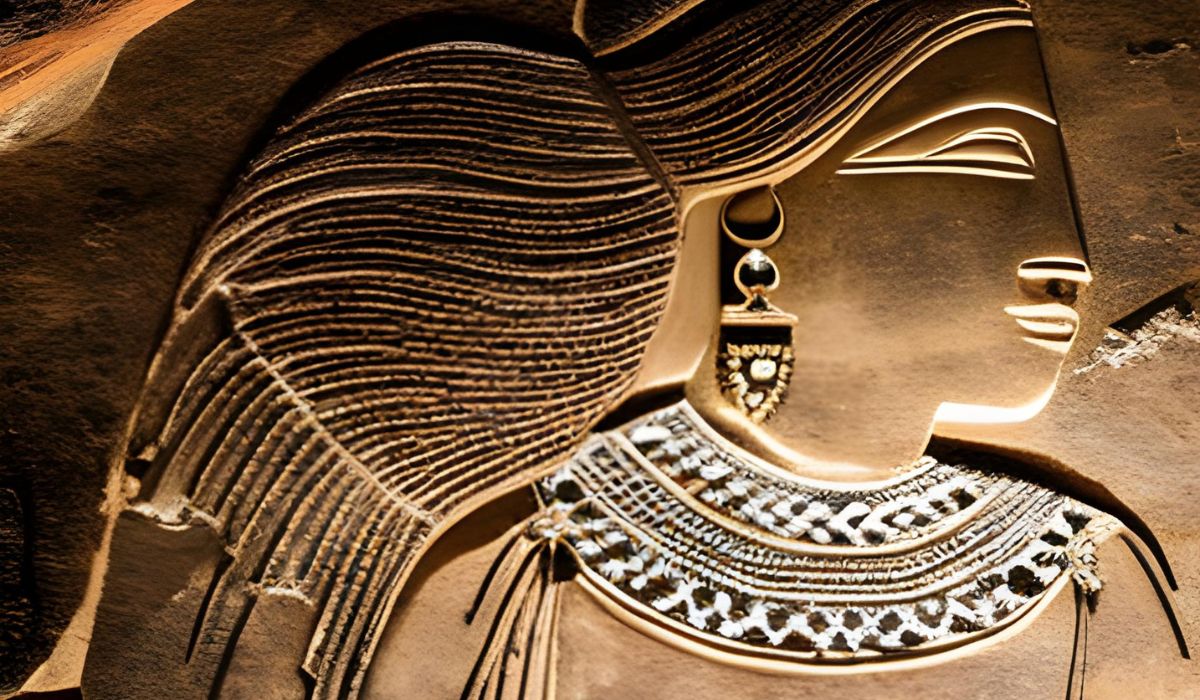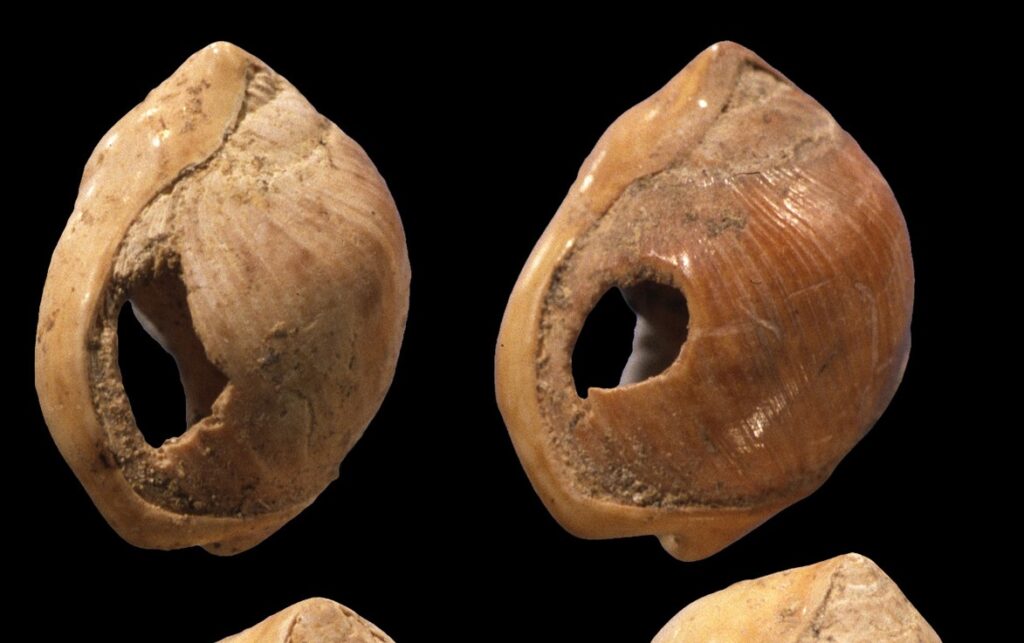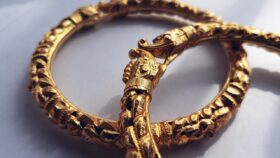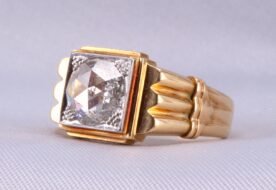
04 Apr Jewelry of the Prehistoric Period
Jewelry is deeply intertwined with the human experience. No other handmade item has been invested with such profound emotional, spiritual, creative, and sentimental value. The history of jewelry and its significance can be traced all the way back to the pre-historic era and ancient civilizations.
The earliest pieces of jewelry ever discovered were made by prehistoric humans over 100,000 years ago. These early examples of jewelry were simple in design and were made from materials that were readily available to these ancient peoples, such as bones, teeth, shells, and stones.
One of the oldest known examples of jewelry is a set of perforated beads made from Nassarius shells, which were discovered in a cave in Israel in 2006. These beads are estimated to be between 100,000 and 135,000 years old and are believed to have been used as a necklace or bracelet.
In 2010, archaeologists discovered that Neanderthals wore jewelry, when prehistoric eagle talons were unearthed that had been modified to create holes at the base, suggesting they had been strung together and worn as a necklace. The discovery was made at a site in Croatia that dates back to around 130,000 years ago, when Neanderthals were known to have lived in the region.
Another early example of jewelry is a set of 82 perforated shells discovered in a cave in Morocco, which are believed to be between 82,000 and 70,000 years old. These shells are thought to have been used as beads or pendants and are further evidence of the ancient human desire to adorn the body with decorative objects.
Other early examples of jewelry include bone and shell pendants, which have been found in archaeological sites throughout Europe and Africa. Some of these pendants have been engraved with intricate patterns, suggesting that they were not only decorative but also had cultural and spiritual significance.
Overall, these early examples of jewelry represent the beginnings of human creativity and self-expression. They are a testament to our innate desire to create and beautify, and they offer a glimpse into the lives of our distant ancestors.

Items of Prehistoric Jewelry
The Venus of Hohle Fels: This is a small carved figurine of a woman that was discovered in a cave in Germany. It is estimated to be between 35,000 and 40,000 years old and has a hole in the top of its head, suggesting that it may have been worn as a pendant.
The Queen’s Crown of a 5th-century BC Scythian Queen: This gold headdress was discovered in the late 1800s in a royal tomb in Ukraine. The crown is adorned with a multitude of gold plaques and plates, with inlaid precious stones and a series of animals.
The Sumerian Jewelry of 3rd-Century BC Queen Pu-abi: Among the many treasures found in the tomb Queen Pu-abi (in the ancient city of Ur in modern-day Iraq) were elaborate pieces of jewelry made of gold, lapis lazuli, carnelian, and other precious materials.
The Welsh Gold Cape: This is a ceremonial cape made of gold that was discovered in a burial mound in Wales. It dates back to around 1900-1600 BC and is believed to have been worn by an important figure during ceremonial events.
The Jade Cong: The Jade Cong is a type of ritual jade object that was produced in China during the Neolithic period, from around 4000 to 2000 BCE. It is shaped like a hollow cylinder, with square holes carved into its sides. The meaning and purpose of the Jade Cong are not fully understood, but it is believed to have had spiritual and symbolic significance.
Afghan Bactrian Gold: The Bactrian Gold is a collection of over 20,000 gold objects that were discovered in a burial mound in Tillya Tepe, Afghanistan. The objects date back to the first century BCE and were made by the nomadic tribes that inhabited the region at the time. The collection includes necklaces, earrings, bracelets, and other decorative objects, many of which feature intricate designs and gemstones.
Native American Wampum: Wampum is a type of traditional beadwork produced by Native American tribes in the northeastern United States. It was made using the shells of quahog clams, which were drilled and strung together to create belts, bracelets, and other decorative items. was used as a form of currency in trade and as a gift in diplomacy, and it was also used to record important events and agreements.
C. Blackburn Jewelers of La Jolla has fascination with the history of fine jewelry that stretches all the way back to these early human civilizations. Owner Carl Blackburn welcomes anyone with a passion for jewelry to visit his store to share your passion and get answers to any questions you have about the world of fine jewelry.




